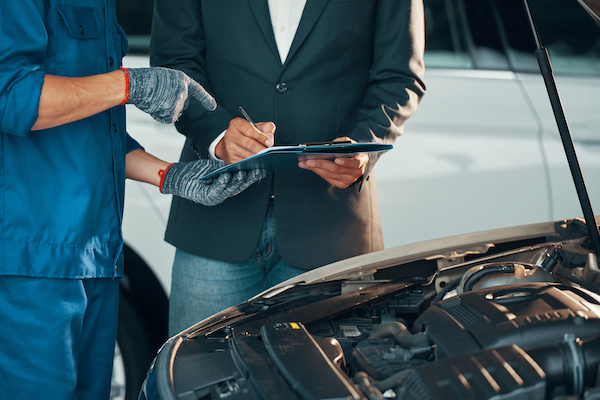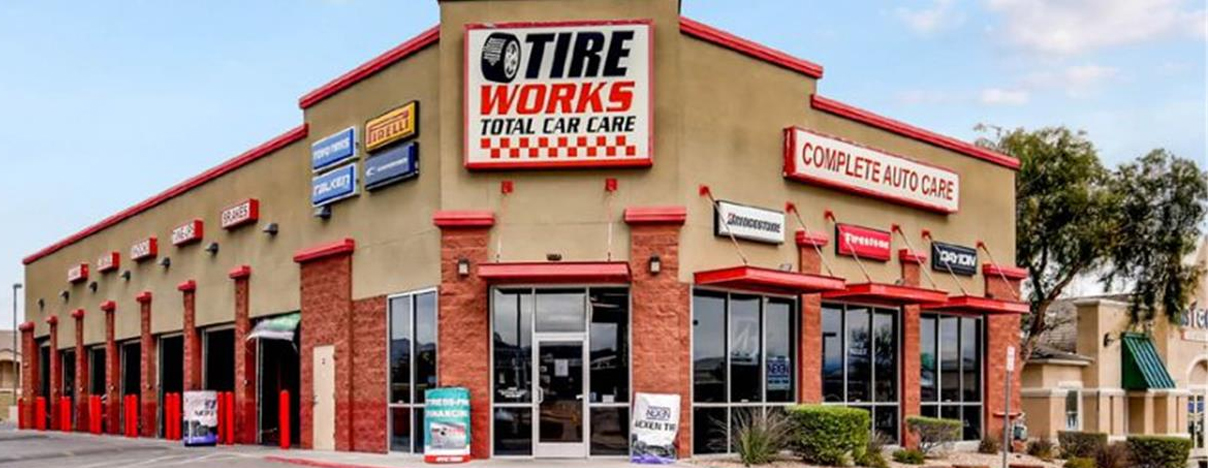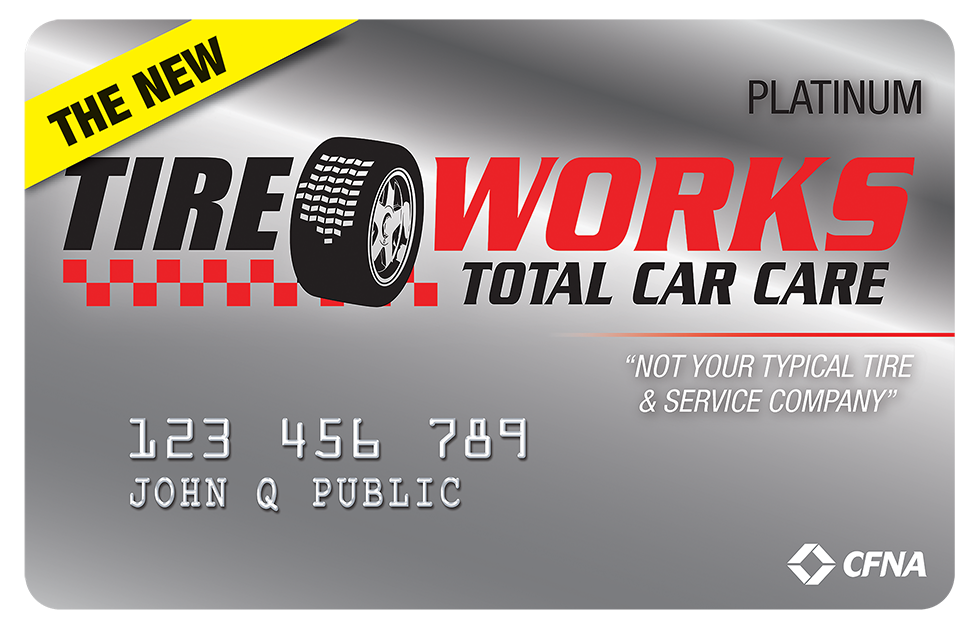Comprehensive Guide To Auto Repairs in Las Vegas

Your vehicle will be one of the largest investments you’ll make. But, if it is kept properly maintained and repaired by an experienced auto mechanic, you can extend your vehicle’s life and get the most value possible.
Read on for information on understanding the basics of auto repair, some of the most common auto repair services, how to identify common auto problems, and the importance of preventative car maintenance.
The Most Common Auto Repair Services
Ideally, you want to be able to bring your vehicle into one place no matter the problem or maintenance that needs to be done. Quality auto service shops in the Las Vegas area will have technicians who are experienced in a wide range of car repair and maintenance services, providing a one-stop-shop solution.
Some of the most common auto repair services include:
- Engine diagnostics
- Brake repair
- AC service and repair
- Cooling system repair and servicing
- Electrical repair
- Tire repair
- Wheel alignment
- Steering system repair
- Tune-up
- Battery replacement and servicing
- Oil change
How to Choose An Auto Service Shop in Las Vegas
When you are looking for a reliable and trustworthy auto repair and service shop in Las Vegas, there are a couple of things you can do and look out for. These include:
- Ask your family, friends, or other people you trust for their recommendations.
- Shopping around either online or by phone and comparing prices and warranty policies on repairs.
- Asking to see the shop’s current license from the Department of Motor Vehicles. Legally, auto repair shops in Las Vegas and throughout Nevada have to be licensed.
- Looking for the Automotive Service Excellence (ASE) certification seal. Technicians who are ASE-certified have demonstrated that they meet professional standards of knowledge and competence in specific technical auto repair areas.
- Ensuring that the shop will honor your vehicle’s manufacturer warranty.
- Ensure that you will receive an itemized written estimate of the proposed repairs before any work is started.
What to Know About the Parts Used in Auto Repairs
When you receive an estimate for the auto repairs you need on your vehicle, you may see one of several different classifications of parts. The use of these different classifications will depend on availability, price/your budget, etc. It is important to understand the different classifications and the warranty coverage that may or may not come with the part.
Parts can be classified as:
- New: These parts have not been used at all and have been made to the original manufacturer's specifications, either by the vehicle manufacturer themselves (OEM) or an independent company (aftermarket). The prices and quality of these parts will be higher than the other two classifications and will usually include warranty coverage.
- Remanufactured, Rebuilt, Reconditioned: These terms all mean the same thing, that the parts were used and have been restored to a good working condition. Many manufacturers offer warranty coverage on replacement parts, but not the labor.
- Salvage: These used parts have been taken from another vehicle without alteration. Salvage parts may be the only source for certain things, but their reliability is rarely guaranteed.

How to Identify Specific Auto Problems Quickly
The more you know about your vehicle and what to look out for when it comes to common problems, the more you’ll be able to catch an issue before it becomes an even larger and more expensive auto repair. Then, you can get your vehicle into your closest auto repair location with a pretty good idea of what might be going on.
You can actually use four out of your five senses to pick up on some common issues:
By Sight
It is a good habit to get into regularly looking under your vehicle for any leaks or puddles on the ground. You can determine a possible issue by the color of the fluid:
- Bright yellowish-green, light pastel blue, or fluorescent orange watery fluid: A coolant/antifreeze leak, often from a bad hose, faulty water pump, or leaking radiator.
- Dark brown or black greasy fluid: An engine oil leak, often caused by a bad seal or gasket.
- Red, oily fluid: A transmission or power-steering fluid leak.
- A puddle of clear water: This is usually not a problem and is most often condensation from your vehicle's AC.
By Smell
Some common vehicle issues have a distinct smell that you can look out for. These include:
- Sharp smell similar to burnt toast: Often signals an electrical short and/or burning insulation. Do not continue to drive the vehicle if this happens.
- Continuous burning-sulfur smell similar to rotten eggs: Usually means a problem in the catalytic converter or other emission control components.
- Strong bitter, burning odor: Often means there is an oil leak or an oil change is long overdue.
- Smell of burning chemical: Often indicates overheated brakes or clutch. If light smoke is also coming from a wheel, you have a stuck brake and you should have the vehicle towed in for repair.
- Sweet, maple syrup-like smell: Usually indicates a coolant leak. Keep an eye on your temperature gauge to ensure your engine has not overheated. If it has, the vehicle should be towed into the auto repair shop.
By Sound
Different sounds can provide valuable clues about auto repair or maintenance that may be needed on your vehicle. Some common noises include:
- A loud, sharp squeal: Can mean loose or overly worn power steering, faulty fan, or worn air conditioning belt.
- A sharp clicking related to vehicle speed: Could be caused by a stuck valve lifter, low engine oil, or a loose or bent fan blade.
- A high-pitched screeching while the vehicle is moving: Often means the brake wear indicators are alerting you it is time for brake maintenance.
- An unusual low, rhythmic rumble: Can be caused by a defective exhaust pipe, bad muffler, or a worn universal joint.
- A heavy, rhythmic/knocking: Can be from a loose transmission torque converter, a worn crankshaft, or worn connecting rod bearings.
- A random clunking: Often caused by a loose suspension component or loose exhaust pipe.
By Feel
One of the best indicators of a problem is the difference in how the vehicle feels when you are driving it. Whether it is a rougher ride, difficulty handling, or vibrations, these things always point to a problem that will need auto repair.
Here are a few things you may feel:
- The vehicle pulling to one side while driving: Can be caused by a misaligned front end, an underinflated tire, worn steering components, or a brake issue.
- Vibration in the steering wheel: Often caused by an unbalanced or improperly balanced tire.
- The brake pedal is spongy or sinks to the floor when pressed: There is a brake issue and your braking power is significantly reduced.
- Difficulty starting the engine, rough idling, or stalling: Often indicates an engine issue that could involve the starting system, charging system, or fuel system. Further engine diagnostics will need to be done to pinpoint the problem.
- Abrupt or hard shifts between gears or failure to shift during acceleration: Usually caused by a component failure within the transmission system.
Expert Auto Services You Can Count On
If you are looking for expert auto repair in Las Vegas, the experienced team here at Tire Works can help. Our ASE-certified technicians can perform all of the repair or maintenance services your vehicle may need. We use only the highest-quality parts backed by unmatched customer service, all at the best prices.
Count on us when you need professional auto services for your car, truck, or SUV. Schedule your appointment online now!











